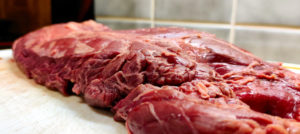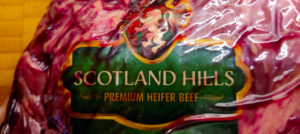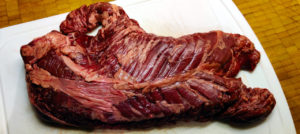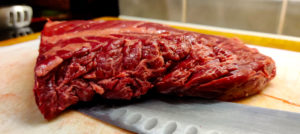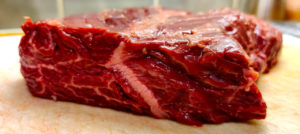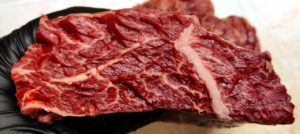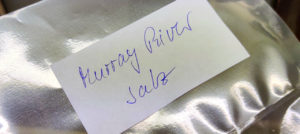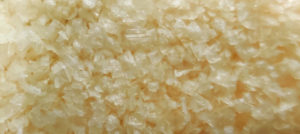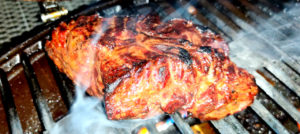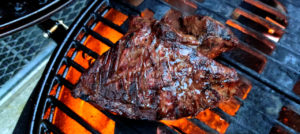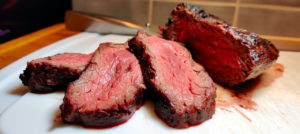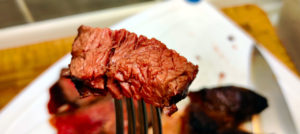Hanging tender (French “Onglet”) – or kidney cone in German due to its position and shape – is “technically” considered to be offal, but as pure muscle meat it has basically nothing to do with it.
For each animal, whether beef, buffalo or bison – this selected part exists only once. In recent years, interest in this cut has grown – which is certainly due to the word of mouth of many professional grill masters, but ultimately also to the impression this piece of meat makes. It has particularly strong and long muscle fibres and therefore requires “special attention” during grilling.
The hanging tender is a little bit like a flank steak, because this one is also characterized by long fibrous muscle strands. In direct comparison, however, it is quickly noticeable that the hanging tender tastes much more aromatic – which is not surprising because of the beautiful grain of the meat. Because of the many positive experiences I decided to buy heifer meat from SCOTLAND HILLS.
With a fresh weight of just over one kilo the question “what do the others eat” naturally arises? Here I can only recommend to “organize” more than just one of the coveted pieces – your guests will thank you for it.
As always, I took the good piece out of the foil and fridge about an hour before the barbecue, dabbed it off and put it in the kitchen. Especially with such long fibrous meat, it makes a big difference with which temperature it lands on the grill.
In many places it is recommended to parry the meat before grilling it – often it is already offered without the middle tendon – whereby I personally always make this dependent on how I want to use the meat later. So, if you want to remove the strong middle tendon before grilling is entirely up to you – I removed it after the grilling.
When the meat was at room temperature, I simply salted it and sprinkled it with a little virgin olive oil. This time I chose the coarse, Australian *Murray River salt. Although this delicate slightly pink salt is mainly used for seasoning at the table, I found it ideal for hanging tender because of its mildness and the slightly melting “flakes”.
Apart from that, I do not use pepper before grilling – because pepper often leaves a slightly bitter note when burned. I had thought about using fresh garlic, but then I refrained from doing so in order not to spoil the first impression of the cut, which is still new to me.
At the beginning I worked with the maximum temperature of my tiny Landmann. So, I was able to give the meat a few nice stripes and the lovely roasted aromas. After that I reduced the temperature to avoid the muscle fibres contracting too much and the piece becoming hard or even dry.
Of course, it would have been possible to put the whole thing in the oven for finalizing – sous vide backwards – but with such small pieces I feel more comfortable at the grill. I turned the good piece twice – each side was grilled for about 5-6 minutes.
After that I let the piece stand in a preheated oven at about 50°C for 3-4 minutes before I cut it. The meat was – as the name already suggested – mostly tender, but in the bite more solid than fillet – which I can only welcome.
It is very important – especially with this cut – that you take care to cut it against the fibre. It’s not always easy to put chic pieces on the plate for all your guests because of the grain, but taste and consistency are the most important things.
Up to now I have never had a piece of beef where the difference in enjoyment depended so much on how it was cut and I certainly didn’t hit the perfect angle to the fibre at the beginning.
Nevertheless, the first hanging tender was a great taste experience for me. By the way – due to the great aroma – we later completely abandoned pepper. On the one hand, we enjoyed the meat classically as a bare steak, on the other hand we made a Thai beef salad from it. A basic recipe can be found here – simply replace the delicious Duroc with Hanging tender.
I hope I was able to whet your appetite and make you want to try a less common cut – enjoy trying it out!
*The delicious Murray River salt that was used here – and many other delicious salts – are also available at Salmundo.

